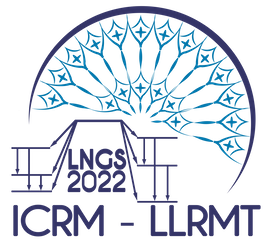Speaker
Description
The DarkSide-20k experiment will search for dark matter in the form of WIMPs and has potential to set the most stringent limits for the spin-independent interaction of heavy WIMPs with nucleons. The central detector will be a dual-phase time projection chamber with an Ar target. The background requirement is 0.1 events in 200 tonne years, which is the most stringent one ever set so far in the field of rare event searches. In order to fulfill it a thorough assay campaign that has been running for five years to assess the radiopurity of the detector materials, its translation into background in the region of interest for WIMP searches and informing the design for best detector performance.
In this talk, we will first present the organization of the assay campaign, which was developed paying special attention to the decay chains of U and Th. Several assay techniques are combined in order to be sensitive to the chain parents (ICPMS), the different gamma emitters through the chain (HPGe) and the often ignored Po-210 content in the bulk of the materials. Such measurements are not redundant since breaking of the secular equilibrium is observed in a large proportion of the materials assayed and the Po-210 in the bulk can be up to two orders of magnitude more abundant than its precursors.
We will discuss the translation of such backgrounds into trigger rate and background in the region of interest for the WIMP searches, giving details of the procedure to do so. Neutrons are the main background induced from detector materials in Ar TPCs, so special attention is payed to their estimates. SaG4n is a Geant4-based open code developed within the framework of DarkSide and is used for calculating the neutron yield induced by (a,n) reactions, with alphas coming mainly from the mentioned radioactive chains.
A specific mass spectrometry campaign has been added to the radioassay campaign in order to find out the chemical composition of critical components and minimize the uncertainty of the (a,n). This is specially indicated in the case of heterogeneous components, materials with relatively high activity or potential presence of isotopes with high (a,n) cross section.
The details on the assay campaign and its results to date will be presented together with an overview of the status of the DarkSide-20k experiment.

